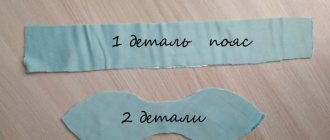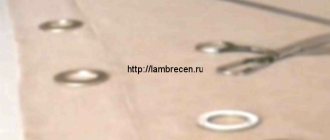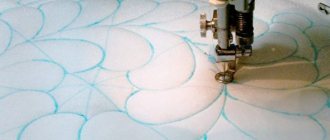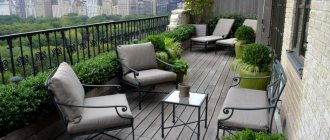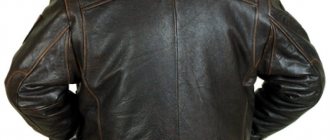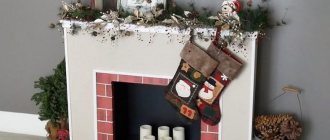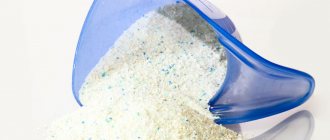Today, designers not only introduce new and original trends, but also constantly return to their roots. The same thing happened with buffers. They have found new life and “sparkled with bright colors” thanks to modern fabrics and textures. In the Middle Ages, such window decoration was the privilege of only the nobility, as it was very expensive. In the modern world, you can afford this even with a small budget, if you know how to make a buffer for curtains with your own hands, without the help of designers and without special financial costs.
To sew mine, I took a side of a square equal to 18 cm.
I needed a lambrequin with a finished length along the eaves of 1.30 m. To do this, you need 1.30, multiplied by the assembly factor of 2.5.
It turns out that according to the length of the fabric I had to take 1.30x2.5 = 3.25 m + 5 cm for processing the sides. Equals 3.30 m.
Now we need to adjust the amount of fabric along the length so that our squares, into which the diagram is divided, fit completely along the length of the product, and do not break off somewhere in the middle. That is, we divide 330 cm by the size of the side of the square, which I took with a length of 18 cm, we get: 18.33.
That is, in a length of 340 cm I can fit 18.33 squares, so I just take an integer number of squares, that is, 19 pieces. So, we multiply 19 squares by 18 cm and get 342 cm or 3.42 m plus 4 cm (or 6 cm) for processing the sides. Total 246cm. or 2.46m. I took this length of fabric for a lambrequin with a finished length of 1.3 m along the eaves. If you take the side of a square of 15 or 20 cm, then divide not by 18, but by 15 or 20.
Folding technology
This technology will make folds original and unique. The fabric is secured with stitches, as a result of which folds are created. The technology is carried out according to the diagrams.
At first it may seem that these schemes are quite complex, but in practice, even beginners in needlework can figure them out. For beginners, simple patterns are needed; for beginners, the main thing is to understand them. What is a buff pattern? A puff pattern is a grid that has rows of dots and line directions that should be tightened. To make ties and folds on the inside of the fabric, dots must be placed. The dots must form parallel rows and also be equidistant from each other.
The rows should be parallel to the warp and weft threads of the drapery. Thanks to this, the folds will look beautiful and even. Marking and assembly is carried out manually. It is recommended to do marking using a specially designed marker. It is easy for them to apply markings, and most importantly, it can be cleaned without any problems.
As a replacement, it is possible to use ordinary chalk. It is necessary to calculate the material costs. The main factor that affects material costs is the selected pattern. It is best to take a fabric that will be 2 times larger than the area of the area (the location of the finished folds). Markings can be applied to both the outer and inner sides of the fabric, depending on the pattern.
The material can be different, but the most popular are silk and gabardine.
If work is carried out on the outside, then you need to be extremely careful. The seams must be perfect. In the areas where the fabric is joined, it is recommended to additionally sew on some additional elements, for example, beads, if it all looks harmonious. The diagram should include not only rows of points, but also the directions of the lines.
The directions of the lines are needed so as not to get confused during work. The distances between the lines may vary. If you use thick fabric as a material, then it should be approximately two centimeters. If the material is thin - one and a half centimeters.
We decided on the length of the fabric. Now we determine the width of the cut fabric.
- See Fig. 2 . From the picture it follows that I need to take a fabric width equal to 18x3 +8 cm (width of the curtain tape plus 2 cm allowance for freedom) +2 cm (allowance at the bottom of the lambrequin) + 3 cm for processing the bottom edge. Total 67 cm. When finished, the product will be 1.30 cm in length and 47 cm in width (height).
- If you want a different length, then do the appropriate calculations. If you want a smaller width, then take the sides of a square of 15 cm, and if you want a larger one, then you can take not 3 rows of squares in the pattern, but 4.
- Now that I have decided on the size of the fabric for the cut, I cut out a strip of fabric 3.42 m long and 67 cm wide. I finish the bottom and sides with a hem seam and sew on curtain tape. You can see how to sew curtain tape here
DIY curtain-buffs
First you need to decide on the general concept. Will folds adorn the top of the fabric or pelmet?
Lush draperies look better on a plain base, but a jacquard pattern, reminiscent of frost on glass or satin stitch embroidery, can give unexpected and interesting effects. You can learn more about curtains and jacquard fabrics in this article.
The next step is to draw a diagram on paper.
- I take pattern paper and draw a diagram on it in three rows with a square side of 18cm (you can take your own size):
- Now I cut out the drawn diagonals of the squares so that the markings can be conveniently applied to the fabric:
Types of clamps
Depending on the method of fixation, decorative accessories come in several types.
- The most popular holders are made in the form of a brooch or hairpin. The fabric is secured by piercing. You can make such a holder yourself. You can decorate curtain clips with various beads and other small details.
- In a children's room or home office, the ideal option would be a holder in the form of a belt, rope or suspender. This method of fastening consists of the holders encircling the fabric at the desired level and tightening, and then attaching to the wall holder. A similar method of fastening is used for holders of locks or buckles. Such fixing methods are very practical for thick and voluminous curtains.
- In recent years, magnetic holders have become especially popular. At the ends of the clips there are small magnets, which, when connected, provide tight fixation of the tissue. They can be mounted at any curtain height. Today, magnet holders are decorated with metal, wood, plastic or some kind of precious stone.
- In a children's room, you can secure the curtains using a toy-shaped tie. And for the kitchen you can choose original holders in the form of a fork, spoon, cup or vase without a bottom. You can make a holder with your own hands from old jewelry. To create a composition, you can use brooches, hairpins, beads or bracelets.
- Knitted knots can also be used as a tie. They can be made from small scraps of fabric, ribbon or rope. The simplest and easiest way to transform curtains is with twine. This ordinary element can be transformed using improvised means into an original accessory. To give the room an oriental style, you can grab the canvases with clips in the form of hieroglyphs of various shapes or colors. And for the bedroom you can choose floral clothespins. Such holders will give the room a romantic style.
Among such a wide variety, it is very difficult to choose a tuck, because it is important not to spoil the style of the entire room. For airy and light organza tulle, preference should be given to clothespins in the form of magnetic clips, pins, braid or rope fringe. Clothespins with feathers, beads or beads would also be optimal.
Bright curtains with patterns are best decorated with plain tucks. Or, on the contrary, for plain ones you can choose a colored or shiny accessory in the form of a brooch or lock. Pintucks made from the likeness of a precious stone will add elegance to the Baroque style. The high-tech style will be decorated with clothespins made of plastic or glass. To tie up curtains in a child's room, it is best to give preference to tucks in the form of a toy. A monkey with its paws wrapped around the cloth will look original.
I received a pattern.
- I lay the pattern on the fabric and make markings from the inside out. To do this, you can use a disappearing felt-tip pen, if the fabric is transparent, if not transparent, then you can use a pencil. But not with chalk and soap, since the markings will be erased before you assemble the puffs. I used a silver gel pen.
- The markings are done, you can start assembling the puffs:
Necessary materials
You can sew curtains with buffers without using a sewing machine. But, despite this advantage, it is worth stocking up with quite a large number of auxiliary tools:
- Sewing needles (note that these need to be quite long).
- Threads. They should be the same color as the fabric.
- Sewing pins with colored heads.
- Curtain tape.
- Chalk or a special sewing marker.
Important!
Chalk or tailor's marker can be replaced with a bar of soap. It draws well, but is easy to erase and leaves no marks.
- Tape measure.
- Long ruler.
- If available, a sewing machine.
It's similar here.
Here the lambrequin is sewn from opaque, denser fabric and, of course, looks more beautiful than in the master class, but the manufacturing technology is the same.
But what a spectacular pick-up you can make with your own hands, using the same buffa technique and according to the same pattern. There are only two rows in this pick-up. You can choose the size of the squares at your discretion:
Imagine, you can sew such a lambrequin puff and add tiebacks made using the same technique to the curtains. It will be a great ensemble.
I would just like to add that this lambrequin looks better when it is sewn from denser, non-transparent fabrics.
Then the puffs themselves are laid out more clear and voluminous. I also advise you to choose a length of at least 2 meters for this type of lambrequin.
Photos of lambrequins puffs:
1
How to choose fabric for buffers?
- For curtains with pleats, it is best to choose lightweight fabrics.
Important!
Try to pay attention to materials that have a metallic shimmer. Thanks to this fabric decor, the future fold will “play” in a new way.
- If your choice fell on transparent fabrics, then they should be interspersed with various inclusions of lurex or other mother-of-pearl thread. Thanks to this combination, you can create beautiful iridescence.
- For lovers of monochrome color, you should make the fold on the curtain less voluminous. This way you can avoid the effect of crumpled curtains.
- Choose contrasting fabrics that will harmonize and highlight the finished product.
Main stages of work
When planning to tackle this painstaking task, you need to know the main thing: this technique requires much more fabric consumption, since you will have to collect frills and folds. For such curtains, you need to buy fabric with a large supply. To work you need to prepare:
- textile;
- threads;
- needles;
- pins;
- iron;
- scissors;
- sewing machine;
- sticky tape;
- pencil.
And so, let's start sewing curtains with puffs. Consider the classic version of curtains with neat tucks:
- First, let's draw on paper a diagram of rows located parallel to each other. The rows consist of points evenly spaced from each other, as shown in the photo;
- Let's transfer the diagram to the selected textile, but it is better to use a pencil or chalk so that it can then be easily removed. It is convenient to connect the dots with chalk so as not to get confused in the diagram when working. During the master class, we always emphasize that the dots must be placed parallel to the weft and weft threads of the curtains. In this case, the folds will be even. When creating the correct diagram, use a pencil and ruler;
- After we have transferred the pattern to the wrong side of the drapery, we begin to make tucks. You need to choose a fairly high-quality thread that matches the tone of your curtains so that the puffs do not unravel when tensioned. The needle must be threaded so that the mark is in the middle, as shown in the photo;
- We tighten the thread well and make a fold, pierce it again above the marked point, and tie the two ends of the thread;
- Thus, by tightening all the points with a thread along the zigzag line, you will get exactly the same “waffles”;
- Having finished working on the first row, start building the pattern according to the pattern in the 2nd row;
- When finished, you will be able to see delicate cross folds on the front side of the textile. These will be the puffs, as shown in the photo.
Now you can get creative and create attractive curtains with your own hands that will decorate your interior. You can decorate the puffs with multi-colored beads or beads. We helped you understand the technique of embroidering puffs - zigzag. There are other options that can be used when making curtains: flowers, leaves, wave, etc.
When creating puffs on curtains, you can use a technique that takes into account the density of the textile, as well as the distance between the points. In addition, at the request of the dressmaker, the dots can be connected both on the inside of the fabric and on the outside. This technique is very effective for work that requires perseverance.
Using this method, the work can be completed much faster than the embroidery method. Anyone can easily master this technique if desired. Let's analyze it by creating the simplest tucks:
- We will cut out a pattern from any dense material;
- Let's mark the points at intervals of 2.5 - 3.0 centimeters. You should not take the distance between points less, otherwise the work will take longer. It is also worth noting that the design of curtains looks better with large puffs. If the gap between the points is greater, wrinkles or extra folds may appear on the fabric;
- On the inside of the curtain, use the template you made to mark all the assembly marks. To make this operation take less time, you can spray powder or chalk into the holes;
- You also need to connect pairs of dots with straight lines. This will also help speed up the process of making puffs;
- Now, using a needle and thread, connect the marked places. At the same time, it is not necessary to cut the thread and tie its two ends after each step. You can simply stretch it out. You can secure the thread by wrapping it around a needle or threading it into a loop.
Let's sum it up
To add some zest to the interior of your home, the easiest way is to change the curtains. It is curtains that bring comfort and warmth to your home, especially when they are made by yourself. The puffs are handmade. If you have a desire, you can create something new and original in the design of your products
Peculiarities
Puffs are tucks and folds in the fabric, made in the form of non-standard drapery methods. The result is textile compositions with a touch of luxury and exquisite romanticism. They are appropriate in the design of bedrooms for women or married couples, in the decor of formal offices or formal living rooms.
The technique that allows you to sew puffs on curtains comes from France, where it was first used by local needlewomen. Its essence is revealed in the translation of the word bouffer, meaning “to blow up.” From the very beginning, these lush elements were used to decorate the clothing of noble people. A little later, with the coming to power of Louis XIV, puffs began to be used to decorate luxurious rooms. And today anyone can sew ruffles on curtains.
Flounces on curtains are most often sewn from the inside of the fabric, only some elements are made from the front. At the same time, in order to get an intricate ornament, be sure to adhere to the pattern according to which the stitches are made.
This design method allows you to assemble lambrequins and puffs into artistic folds, which gives the room a festive, even slightly theatrical atmosphere. Large puffs make a pompous impression and are suitable only for rooms decorated classically. A tall window decorated with long floor-length curtains is considered ideal. If the window is decorated with small folds, then they are also appropriate in small spaces.
Execution algorithm
Types of puffs for curtains, including embossed and very complex ones, require patience and strict adherence to the drawing from the artist.
The general algorithm of actions includes the following steps:
- Selecting a pattern scheme.
- Transferring the ornament to the fabric (from the back or face).
- Arranging conditional points, piercing them with a needle and strong thread (this process requires care so that marks are not visible from the face of the fabric).
- Pulling the threads in a certain order, according to the schematic drawing.
Folds in the fabric are obtained by using a special curtain tape sewn to the fabric and then properly pulled together.
Helpful advice: it is advisable to decorate the connection points of machine or hand stitches with rhinestones, beads or pearls.
Fabric selection
To get puffed curtains for the kitchen or other rooms, you need to choose the right fabric. The best effect of folds pulled together into an ornament is obtained on a knitted fabric that has the property of stretching well.
The shade of the fabric must match the interior design of the room.
The type of textile is chosen depending on the functional purpose. Synthetics are suitable for the kitchen, they are easy to wash and require almost no ironing. For bedrooms, living rooms and offices, it is advisable to use noble fabrics that create a sophisticated atmosphere of discreet luxury.
Lambrequin puffs, created from mother-of-pearl or metallized fabric, emphasize the luxury of the furnishings and the design of the room. To make the fabric sparkle interestingly in the sun, choose lurex fabrics with lush folds. But in the case of plain fabrics of modest tones, it is better to sew small puffs that do not create the impression of crumpled fabric.
In some interiors, curtains with puffs in colors contrasting with the main decor of the window look attractive and unusual.


